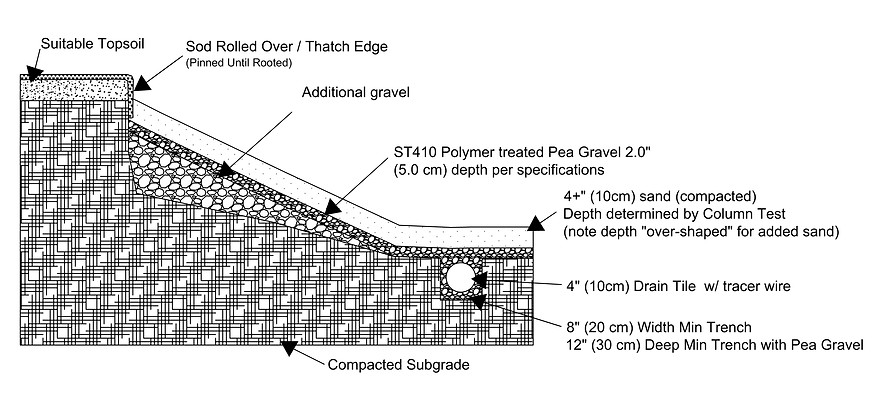top of page


Traditional Construction
Full floor with subgrades comprised of clay, silt, or loam soils
Sand selection dictates sand depth in the lowest-lying areas
Recessed Drain Lines
Used on projects with fine sands on clay, silt or loam soils
Deeper sand depth over the lowest lying drain lines lowers the perched water table

Typical Construction
Sand depth 4 - 6"
Recessed Drain Line
Sand depth 8 - 10"


Open Bottom
Used on projects with fine sands on a high percolating soil
The bottom can be left open or covered with a geotextile
All gravel sprayed with polymer - drain lines included
BBB layer ends in a termination strip or over a drain tile



Partial BBB
Partials can lead to cost savings on large bunkers
The bottom can be left open or covered with a geotextile
All gravel sprayed with polymer - drain lines included
BBB layer ends in a termination strip or over a drain tile



2" of BBB
approved gravel
BBB termination Strip
connected to 4" tile
Sand depth
4 - 6"
Geotextile liner
optional
No Perch Drainage Trench
Deeper sand helps to alleviate "wet bottom"
Trench is in the lowest portion of the bunker
Drain tile in the trench may lay on or within gravel floor
BBB layer ends in a termination strip or over a drain tile



High Inflow
Used when water is diverted into the bunker
Additional BBB gravel or a larger stone can be used to handle the high inflow
Any areas with sheet should be addressed during construction

bottom of page

